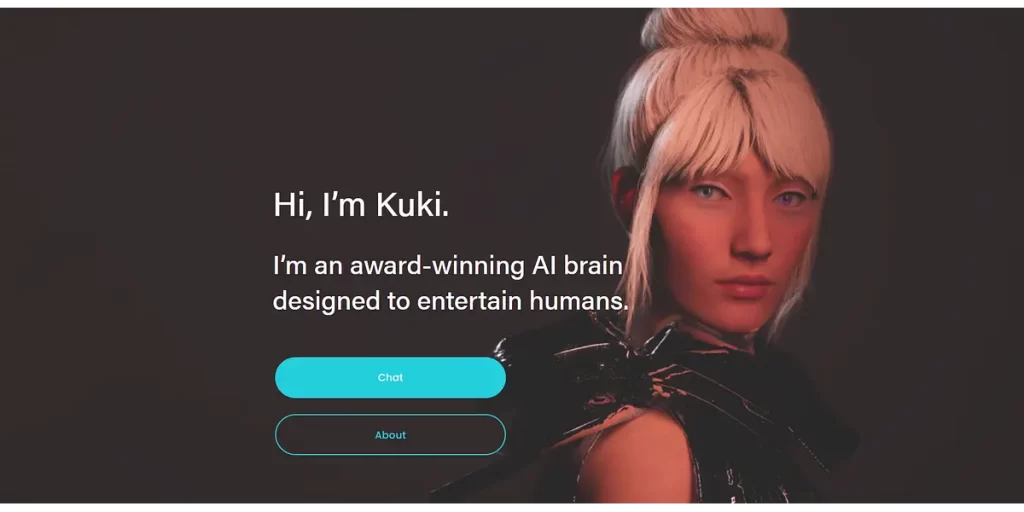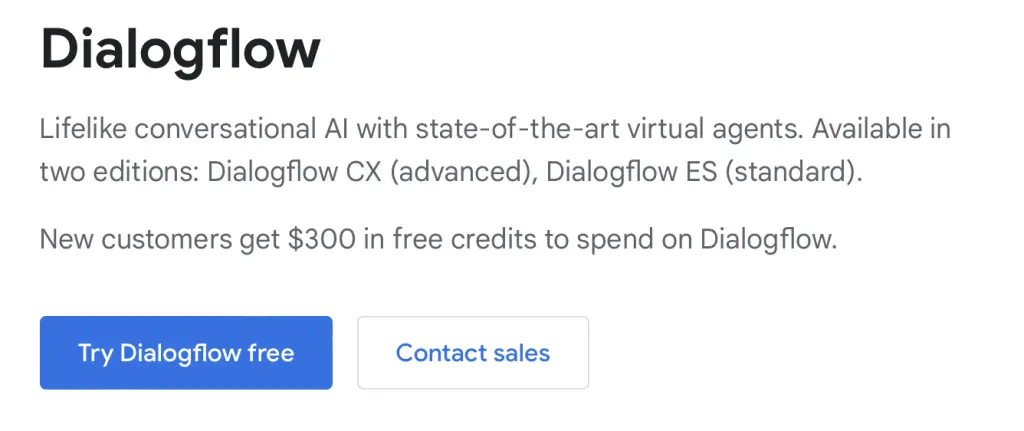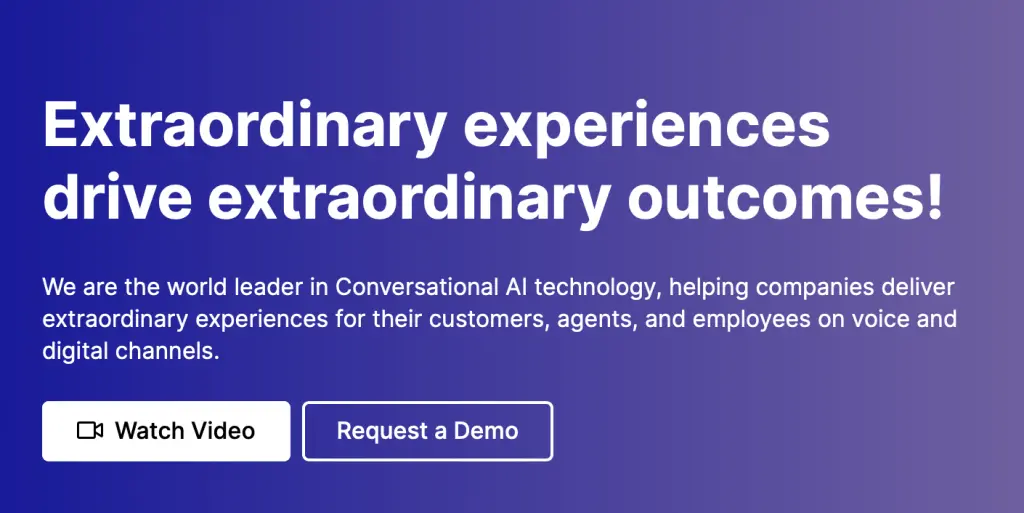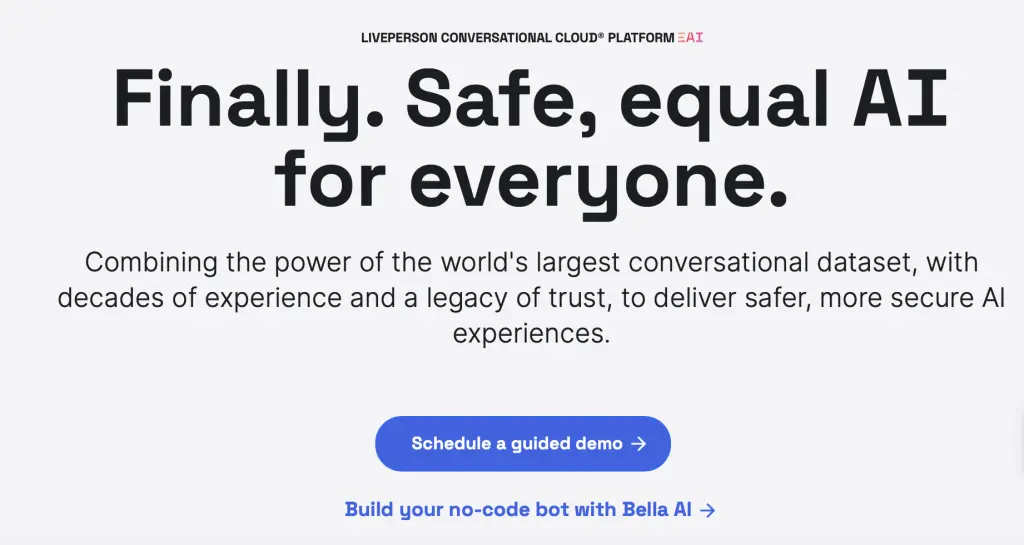
What You Need to Know About AI Chatbots and 5 Well-Known Business Bots!
Want to know which AI robot is the best in 2023? As a quick and personalised way to help customers, AI robots are becoming more and more popular. Bots that talk to people use machine learning and natural language processing to understand and answer real-time customer questions.
Our piece will talk about the best AI chatbots of 2023 that are changing the way businesses talk to their customers.
What is an AI message box?
A computer programme called an AI chatbot uses artificial intelligence (AI) to make conversations with people seem like they are with a real person. You can make chatbots talk to you through text, voice, or a mix of the two. Natural language processing (NLP) and machine learning algorithms help them understand and answer questions and requests from users in a way that sounds like a chat.
AI chatbots can be used for many things, like e-commerce, customer service, and personal helpers. They can tell people about things, answer their questions, give advice, and even do deals!
Some chatbots are made to do certain jobs or work in certain areas, while others can do a lot of different things.
What’s the point of adding an AI robot to a website?
There are several strong reasons why companies should think about adding an AI robot to their websites:
- Better customer service: AI robots can answer customers’ questions right away, 24 hours a day, seven days a week, without any help from a person. In turn, this makes sure that customers get help whenever they need it, which makes them happier.
- Cost-effectiveness: Because chatbots can answer a lot of customer questions at once, you don’t need a big customer service team. When it comes to labour costs, this can save businesses a lot of money.
- Scalability: If your business grows, you won’t have to hire and train more customer service reps because a chatbot can easily handle more customer contacts.
- Faster Response Times: AI robots can answer customers’ questions almost right away, so they don’t have to wait in queue for a real person. This makes things better for customers and gets more of them involved.
- Consistency: Chatbots always give correct answers to customer questions, so there is less chance of mistakes or inconsistencies in the information given.
- Collecting and analysing data: When customers talk to chatbots, they give them useful information that can be used to make profiles of customers, do market research, and make goods or services better.
- Generation of Leads: Chatbots can qualify leads by asking the right questions and getting their contact information. This helps companies find possible customers and keep them interested as they move through the sales process.
- Personalisation: AI chatbots can use information about their customers to make interactions more relevant to each person. For example, they can offer discounts, product suggestions, and material that is specific to each person’s tastes, which can boost conversion rates.
- Availability and Accessibility: Chatbots are available 24 hours a day, seven days a week, which makes it easy for customers in different time zones or with busy plans to get help and information.
- Competitive Advantage: Using AI robots can help your business stand out from others in the same field by showing that you value new ways of helping customers and using technology.
- Support in Multiple Languages: Chatbots can provide support in more than one language, which means your business can reach people all over the world.
- Better User Experience: A well-designed robot can make your website easier to use and more interesting for everyone who visits it.
- Customer Insights: Looking at how customers interact with chatbots can help you improve your marketing and product development by showing you what customers want, what bothers them, and what questions they ask most often.
- Help with marketing and sales: Chatbots can help you keep in touch with leads, suggest goods or services, and even help customers buy things right on your website.
- Less work for human agents: Chatbots take care of boring and repeated tasks, so human agents can focus on more important and complicated conversations. This makes them happier at work.
In what ways does an AI chatbot work?
Artificial intelligence (AI) and natural language processing (NLP) technologies are used by an AI chatbot to talk to people in a natural way. To make things easier to understand, here’s how an AI robot usually works:
- Users send: text messages or voice messages to the robot to start the conversation. This can be any kind of message, like a question, an order, a request for information, or something else.
- Message Parsing: The chatbot’s software reads the user’s message to figure out what they mean and pull out relevant data. As part of this step, the text is broken up into words or sentences and keywords and context are found.
- Intent Recognition: Based on the parsed input, the chatbot’s AI systems figure out what the user wants to do. For example, if someone asks, “How is the weather today?”, the goal could be seen as “Weather Inquiry.”
- Context Management: The robot keeps track of the conversation’s context, which lets it remember what users have said and how they have responded in the past. This helps make encounters make sense and take into account the situation.
- Information Gathering: If the robot needs to get specific information to answer the user’s question, it can do so by using databases, APIs, or other outside sources. For example, if it wants to know about the weather, it might ask a weather API.
- Response Generation: The chatbot comes up with a response that answers the user’s question or meets their request based on the understood purpose, the context, and any data that was retrieved (if any). You can get this answer in writing, voice, or even multimedia form.
- Natural Language Generation (NLG): When the chatbot needs to respond in natural language, it uses NLG methods to make text or speech that sounds like it was spoken by a person.
- User Interaction: The chatbot sends the answer back to the user through the way they normally talk (for example, a website chat, a message app, or a voice interface). The user can then answer the chatbot’s message to keep the exchange going.
- Feedback Loop: The robot stays smart and changes how it answers as the user gives it more information. The robot gets better over time thanks to this feedback loop.
- Integration: Chatbots are often linked to other programmes, like CRM (Customer Relationship Management) software, e-commerce platforms, or databases, so they can do things like place orders, update customer profiles, or make meetings.
- Monitoring and Analytics: Businesses often watch how chatbots connect with users to learn about their habits, feelings, and the questions they ask most often. Analytics can help the chatbot improve its answers and work better overall.
- Security and Privacy: To keep user data safe and trust, AI apps must follow security and privacy rules. Measures like encryption and authentication are usually used.
AI chatbots can be very simple or very complicated, and they can do a lot of different things. Some chatbots are rule-based and follow scripts that have already been written. Other chatbots are more advanced and use machine learning models to handle a wider range of user inputs and change based on what happens. The smarter chatbots can even have talks with multiple turns that look and sound like real conversations between people.
How to pick the best AI chatbot software for your company
Before you can choose the best AI robot software for your business, you need to be clear on your goals and budget. Make sure the software fits your goals by listing specific use cases and connection needs. Check out the software’s AI and natural language processing (NLP) features, paying attention to how it can be customised, how it can grow, and how it can handle multiple channels. Check for data and reporting tools, put security and compliance at the top of your list, and think about the user experience (UX).
Also, look for reviews, references, and trial periods to get real-life information. Think about how the software provider will do in the long run and what is right and wrong. Getting the right people involved and running a pilot rollout can help you make sure the software fits your business needs and that the implementation goes smoothly.
Five well-known AI robots in 2023
Let’s look at the 2023 AI apps that are the best! Read on to learn how to choose the best AI robot for your business.
1. Google Kuki AI
Kuki AI is an award-winning AI chatbot that uses machine learning and natural language processing to have interesting and personalised chats with customers. The robot is one of the most advanced chatbots on the market today because it has won many awards, including the Loebner Prize four times.

The Kuki AI brain
Pros:
- Conversational skills: Kuki AI is famous for being able to have natural, interesting talks with users. It uses advanced NLP methods to understand what users are asking and answer them in a way that seems natural.
- Kuki AI knows a lot about a lot of different things, which lets it be used for many different things. People can ask Kuki about a wide range of topics, from current events to random facts, and get helpful answers.
- Customisation: Kuki can remember past talks and user preferences, which lets it respond to users in a way that is more relevant to them. This function makes it more fun and interesting to use.
- Accessibility: Kuki is easy for users to get to because they can use it on many platforms, like Facebook Messenger, Kik, Telegram, and more.
Cons:
Kuki’s knowledge is limited to the material that is given to it. This means that it might not be able to answer questions that aren’t in its area of power.
2. IBM Watson Assistant
IBM Watson Assistant is a chatbot driven by AI that helps customers by using natural language processing and machine learning algorithms. Businesses can make the robot fit their needs because it can be changed in many ways.

IBM apps for AI
Good things about IBM Watson Assistant:
- Multiple ways to set up: IBM Watson Assistant can be set up on many platforms and devices, such as web, mobile, and voice interactions.
- Easy to use: The platform’s user interface and pre-built templates make it simple for developers and business users to make AI chatbots and train them without needing to know a lot about code.
- Ability to integrate: IBM Watson Assistant can work with many different programmes and systems, which makes it easier to add chatbots to current processes and workflows.
Not so good about IBM Watson Assistant:
Cost: The site can be pricey, especially for companies that use a lot of chatbots.
3. AI chatbot Dialogflow
Dialogflow is an AI tool for conversation that lets developers make chatbots, voice assistants, and other conversational interfaces that can be used on a variety of devices and platforms. It understands what users type and responds in a useful way by using natural language processing and machine learning techniques.

Why Dialogflow is good:
- Dialogflow’s simple user interface and ready-made templates make it easy for developers and business users to make chatbots and train them without needing to know a lot about code.
- Ability to integrate: Dialogflow can connect to many different programmes and systems, which makes it easier to add chatbots to current processes and routines.
- Support for many languages: Dialogflow works with many languages, which makes it easier to make robots that can be used by people all over the world.
Not so good about Dialogflow:
- Dependence on Google infrastructure: Since Dialogflow is a Google product, it depends on Google’s infrastructure a lot. This means that businesses that want a platform with more freedom may not want to use it.
Kore.ai
kore.ai is a platform for chatbots that is powered by AI and offers a variety of chatbot options for businesses, such as for customer service, sales, and marketing. Machine learning and natural language processing help the app understand and answer customer questions right away.

AI chatbot
Why Kore.ai is good:
- Advanced AI features: Kore.ai has advanced AI features like natural language processing, sentiment analysis, and machine learning, which let you make chatbots and virtual helpers that are very smart.
- Full range of integration options: Kore.ai offers full range of integration options, such as APIs, webhooks, and pre-built connections, so businesses can connect chatbots to a lot of different systems and apps.
- Customisation: The platform lets businesses make chatbots that are very special to their needs because it allows for a lot of customisation.
Not so good about Kore.ai:
- Complexity: Kore.ai is a complicated tool that may need specialised knowledge and skills to use well. This makes it harder for smaller businesses or those with limited resources to use.
Chat LivePerson

For businesses, LivePerson is a cloud-based conversational platform that lets them talk to people through chat, messaging, and voice calls. It uses both chatbots driven by AI and real people to give each customer a personalised experience on a large scale.
Why LivePerson is good:
- Support for multiple channels of communication: LivePerson supports many communication channels, such as voice, video, chat, and messaging, so businesses can talk to customers in the way they desire.
- Powered by AI chatbots: The platform’s Powered by AI chatbots can answer a variety of customer questions, making it easier for human workers to do their jobs and speeding up response times.
- Advanced analytics: LivePerson has advanced analytics features that help businesses understand how customers behave, how they feel, and what they like. They can then use this knowledge to have better interactions with their customers.
Not so good about LivePerson:
- Cost: LivePerson can be pricey, especially for companies that use it a lot or on a big scale.
How could AI robots be used in business?
Chatbots that use AI can be used in many business situations and for many different tasks. Here are some popular ways that AI chatbots are used in business:
1.Service and help for customers:
- Taking care of frequently asked questions (FAQs) and answering customer questions right away.
- Helping with account management, recovery of lost passwords, and account queries.
- How to help people with technical issues and how to fix problems.
- Bringing complicated problems to the attention of human beings when needed.
2. Getting sales and leads:
- Using interactions with website guests to find new leads.
- suggesting goods or services based on what a person likes and what they’ve looked at online.
- Helping with the buying process, such as choosing products and checking out.
- Sending personalised ads or marketing texts.
3. Setting up appointments:
- Customers can make reservations or meetings.
- Sending messages and reminders about meetings that are coming up.
4. Online shopping:
- Giving facts about the product, like price and availability.
- Helping people choose products and compare them.
- Taking care of tracking orders and returns.
- Offering support and help after the buy.
5. HR and Services for Employees:
- Taking care of HR questions from workers, like those about benefits, policies, and leave requests.
- Making the hiring process easier for new employees.
- Using computers to do routine HR jobs like keeping track of time or filing expenses.
6. Money and banking:
- Giving account amounts and a record of transactions.
- help with moving money between accounts and paying bills.
- Giving answers to questions about money-related goods and services.
- Finding and reporting scam that might be happening.
7. Medical care:
- Setting up and reminding people of medical visits.
- Taking questions about health and giving basic medical information.
- Giving patients access to their test reports or medical records.
8. Travelling and Being Friendly:
- Travellers can get help booking flights, hotels, and rental cars.
- Giving advice on how to travel and details about places to visit.
- Answering customer service questions about changes or disruptions to trip plans.
9. How to learn:
- Helping kids sign up for and enrol in classes.
- Providing information about education programmes, schedules, and campus services.
- Giving lessons or help with homework.
10. Houses for sale:
- assisting people who want to rent or buy a home find places that meet their needs.
- giving information about the land, its price, and its availability.
- Helping with simulated tours of properties.
11. Help with the law:
- Legal questions answered and basic legal help given.
- Helping with the preparation and filing of documents.
- Getting clients through the legal system and steps.
12. Service to the public and the government:
- Giving people details about government services and programmes.
- People with applications, permits, and licences need help.
- Providing answers to questions about rules and policies set by the government.
13. Restaurants and guest services:
- Taking orders for food and making plans.
- Giving information about the meal, such as what foods are allowed.
- Taking questions from customers about the restaurant’s hours and address.
14. Making things and the supply chain:
- Helping to keep track of orders and delivery progress.
- Giving real-time information on the amount of inventory.
- Taking care of the buying process and questions from suppliers.
15. Getting insurance:
- Assisting people with questions about their insurance policies and claims.
- Giving insurance prices and advice on policies.
- Helping with changes and renewals of policies.
These are just a few examples of how AI chatbots can be used. More and more, companies are coming up with new ways to use this technology to improve customer service, streamline operations, and boost growth. A chatbot can be used in a number of ways, depending on the business, its goals, and the needs of its buyers or users.
Last thoughts
AI robots are quickly becoming an important tool for companies that want to offer quick and helpful customer service.
The best AI robots of 2023 are very advanced. They use machine learning and natural language processing to understand and answer real-time customer questions.
No matter how big or small your business is, there is an AI robot that can help you give the best customer service possible.
Questions and Answers about AI chatbots
Here are some frequently asked questions:
What is an AI message box?
An AI chatbot is a computer programme that can have talks with people, usually through text or voice messages. It does this by using artificial intelligence and natural language processing.
How do AI programmes do their job?
AI chatbots understand what people are trying to say by reading their data and responding appropriately based on set rules and machine learning algorithms.
What are the pros for businesses that use AI chatbots?
Better customer service, lower costs, access 24 hours a day, seven days a week, faster response times, scalability, data collection, and a better user experience are some of the benefits.
What do AI robots mostly do in the business world?
Customer service, sales and marketing, making appointments, e-commerce help, HR and employee services, healthcare support, and more are all examples of use cases.
What do I need to do to add an AI robot to my website or app?
Adding chatbot widgets, APIs, or SDKs to your website is a common way to integrate them. A lot of chatbot systems have documentation and help for integrating them.
Do I need to know how to code to make an AI chatbot?
It relies on the platform for the chatbot. Some have no-code or low-code interfaces that let people who aren’t coders use them, while others may need people who know how to code to be customised.
What kinds of computer languages are used to make AI chatbots?
A lot of people use programmes like Python, JavaScript, Ruby, and more. What you choose will depend on the chatbot framework or tool you use.
How can I teach my robot to better understand what people want?
Giving the robot labelled data and constantly improving its machine learning models is what training is all about. There are tools for teaching intent recognition on some platforms.
Does AI chatbots have the ability to handle private or secret data safely?
Yes, but it’s very important to put in place strong security steps like encrypting data, controlling who can see it, and following data protection laws.
Can AI robots completely take the place of human customer service reps?
Chatbots can answer simple questions, but they might not be able to completely replace real people. For exchanges that are complicated or touch on sensitive issues, human agents are still needed.
What are some moral things to think about when using AI chatbots?
Concerns about ethics include being clear about who the bot is, protecting user privacy, not being dishonest, and making sure the chatbot follows ethical rules.
What ways are there to find out how well my AI robot is working?
KPIs can include things like how satisfied users are, how quickly they are helped, how accurate the information is, how many people buy something, and how quickly their questions are answered. These metrics can be used to measure success.
Where do AI programmes go from here?
More advanced AI might be available in the future, along with more personalised features, the ability to work with other technologies like virtual reality, and wider use across all fields.
Do you know a lot about this? We’re always looking for new ways to add unique insights and deep knowledge to our material. If you have useful information to share, you might want to write for us. We’ll give you credit for your work so that our huge audience can see how knowledgeable you are. Feel free to email editor@freeonlinedirectory.in to begin.











![Find out about the 5 best AI art generators for making beautiful digital art [2023].](https://www.freeonlinedirectory.in/wp-content/uploads/2024/04/best-AI-art-generator-ezgif.com-png-to-webp-converter-195x110.webp)
